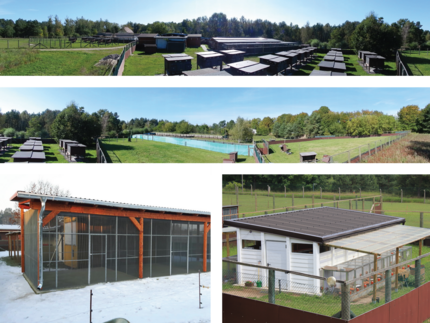In 1993, the Leibniz Institute for Zoo and Wildlife Research (IZW) founded a field research station in Brandenburg to study life history strategies and conflicts, reproductive biology, physiology and behaviour of European model species of interest. The station is located on the edge of the biosphere reserve Schorfheide/Chorin and hosts a large number of model animals such as roe deer, European hare or Alpine marmots which are kept, bred and studied under natural but controlled conditions.
The facility has grown continuously over the past 20 years and has been developed into a facility that allows observations and ethological studies, as well as minimally invasive and controlled manipulations of native wildlife without impairing their behavioural repertoire. A large number of enclosures of various sizes as close to nature as possible are available and equipment for catching, observing and examining animals is designed in accordance with the latest standards of species-appropriate animal husbandry. In addition, modern laboratories and recreation rooms are available for staff and guests.
Three animal keepers work permanently at the field research station to care for the animals, manage the enclosures, and assist the examinations. We also offer committed teenagers and young adults the opportunity to train as zoo animal keepers or to complete a Voluntary Ecological Year (FÖJ) at the field research station.
The field research station serves biologists from different research disciplines and veterinarians as a working platform to realize their research projects under a holistic, interdisciplinary approach. The scientific and veterinary team of the field research station attaches great importance to the application and development of new non-invasive or minimally invasive methods in order to examine the animals under standardised conditions and over a long period of time.
Experimental manipulation
Feeding experiments (e.g. energy restriction), Passage time (marker studies), Partner selection and breeding experiments, Effects of repellents
Methods
Energy Budget, Indirect calorimetry, Ultrasound, Artificial insemination, Electroejaculation, Thermography, Stable isotopes, Telemetry, Body temperature and heart rate measurement

